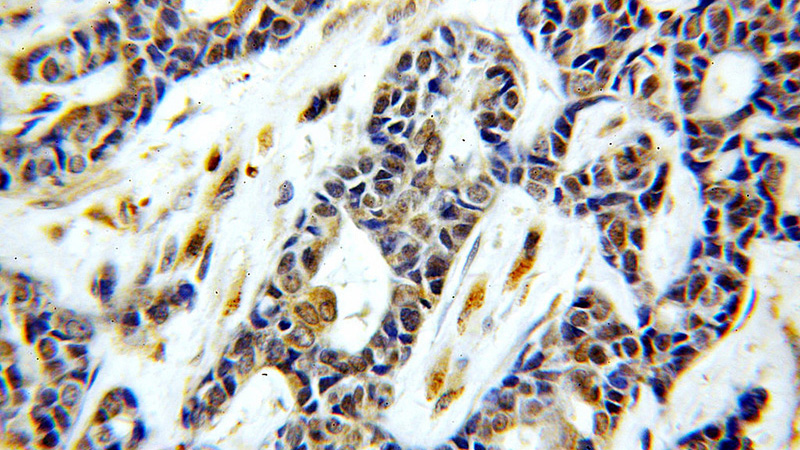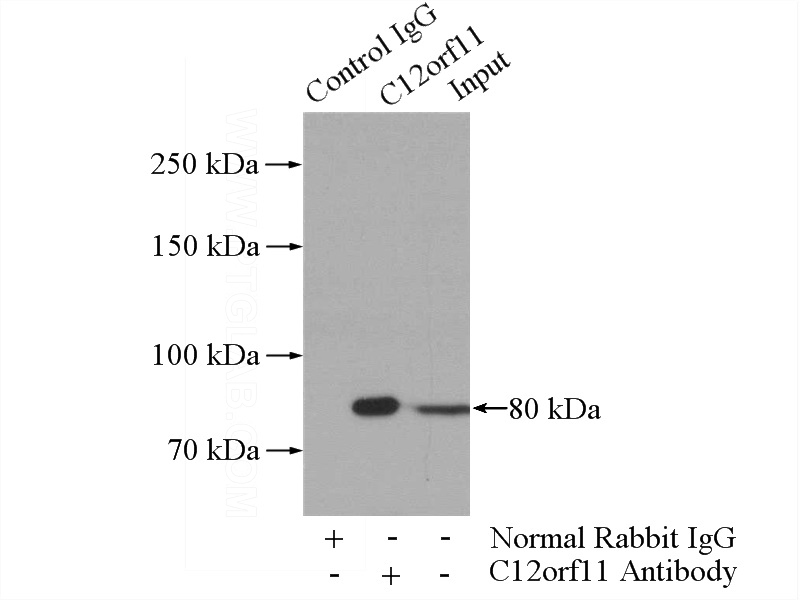-
Product Name
ASUN antibody
- Documents
-
Description
ASUN Rabbit Polyclonal antibody. Positive IP detected in MCF-7 cells. Positive WB detected in MCF7 cells. Positive IHC detected in human cervical cancer tissue, human testis tissue. Observed molecular weight by Western-blot: 70-80 kDa
-
Tested applications
ELISA, IHC, IP, WB
-
Species reactivity
Human,Mouse,Rat; other species not tested.
-
Alternative names
ASUN antibody; C12orf11 antibody; FLJ10630 antibody; FLJ10637 antibody; GCT1 antibody; NET48 antibody; NY SAR 95 antibody; Sarcoma antigen NY SAR 95 antibody
-
Isotype
Rabbit IgG
-
Preparation
This antibody was obtained by immunization of ASUN recombinant protein (Accession Number: XM_017019632). Purification method: Antigen affinity purified.
-
Clonality
Polyclonal
-
Formulation
PBS with 0.02% sodium azide and 50% glycerol pH 7.3.
-
Storage instructions
Store at -20℃. DO NOT ALIQUOT
-
Applications
Recommended Dilution:
WB: 1:1000-1:10000
IP: 1:1000-1:10000
IHC: 1:20-1:200
-
Validations

MCF-7 cells were subjected to SDS PAGE followed by western blot with Catalog No:108274(C12orf11 antibody) at dilution of 1:4000

Immunohistochemical of paraffin-embedded human cervical cancer using Catalog No:108274(C12orf11 antibody) at dilution of 1:100 (under 10x lens)

Immunohistochemical of paraffin-embedded human cervical cancer using Catalog No:108274(C12orf11 antibody) at dilution of 1:100 (under 40x lens)

IP Result of anti-C12orf11 (IP:Catalog No:108274, 4ug; Detection:Catalog No:108274 1:4000) with MCF-7 cells lysate 1040ug.
-
Background
Asunder (ASUN) is a conserved protein that has been reported as a critical regulator of dynein localization during Drosophila spermatogenesis (PMID: 19357193). Mammalian and Drosophila ASUN proteins revealed that they are 43% identical and 64% similar. Human ASUN (also known as GCT1 or C12ORF11) promotes dynein recruitment and centrosomal tethering to the nucleus at mitotic entry (PMID: 23097494).
-
References
- Stadelmayer B, Micas G, Gamot A. Integrator complex regulates NELF-mediated RNA polymerase II pause/release and processivity at coding genes. Nature communications. 5:5531. 2014.
- Ye X, Zhang Y, He B, Meng Y, Li Y, Gao Y. Quantitative proteomic analysis identifies new effectors of FOXM1 involved in breast cancer cell migration. International journal of clinical and experimental pathology. 8(12):15836-44. 2015.
Related Products / Services
Please note: All products are "FOR RESEARCH USE ONLY AND ARE NOT INTENDED FOR DIAGNOSTIC OR THERAPEUTIC USE"
